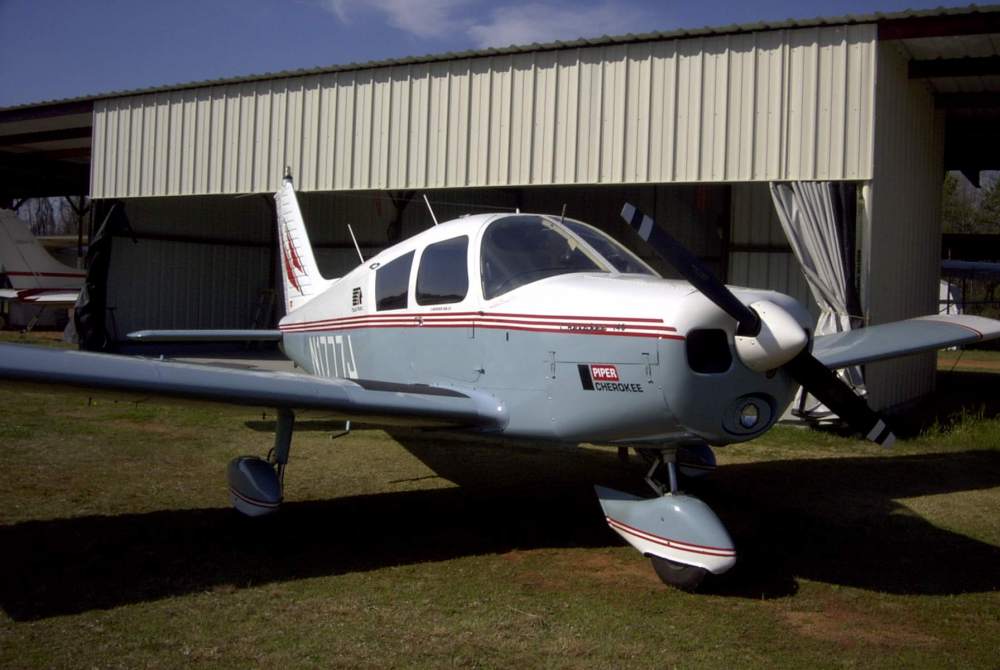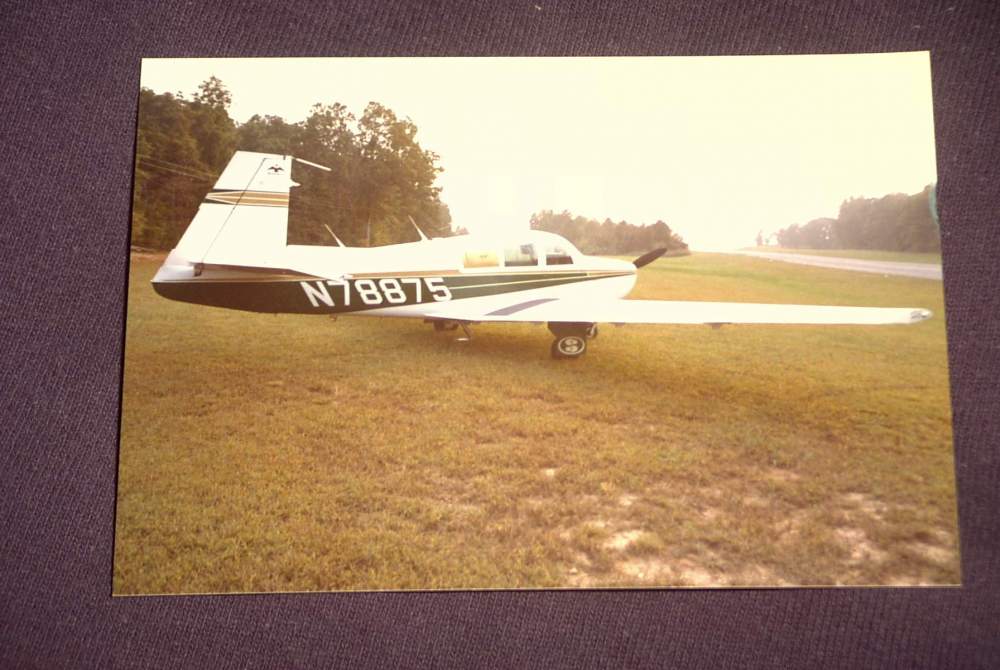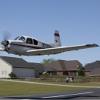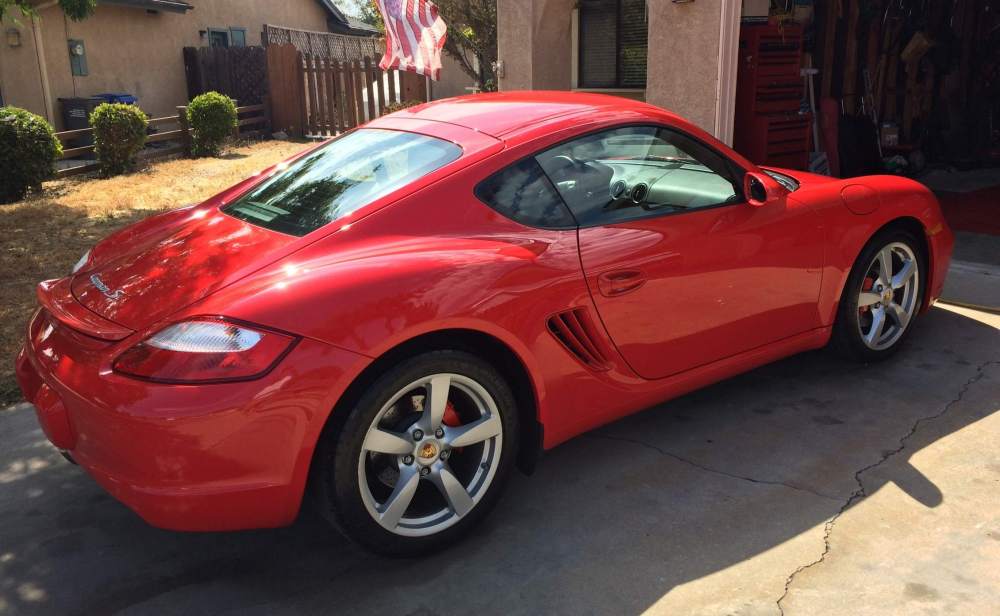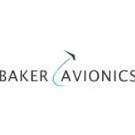Leaderboard
Popular Content
Showing content with the highest reputation on 01/12/2020 in all areas
-
This is probably the best thread on icing I’ve seen in the 10 or so years I’ve been “lurking” mooneyspace. It has descriptions of a situation that looks innocuous, but shows just how critical it could become in the winter time. The descriptions and pictures of the speed at which the ice builds, and the ultimate possibility. Of SLD exposure. I really wish there were more threads like this, but I’m willing to bet that people who have had similar experiences are afraid of posting for fear that they would be raked over the coals... or for fear of enforcement action. Regardless, I greatly appreciate this thread, and the information and honesty of both @kmyfm20s and @Austintatious: I believe this information can help all mooney pilots (TKS equipped or not) make safer decisions4 points
-
It just seems ridiculous to me that Garmin seems to have abandoned Don. He spent all of that money on something that was supposed to work as designed, it doesn't, yet Garmin won't make it right. I'm not sure this would be tolerated in any other industry. Think of buying a $20-25k Ford and it won't drive straight. Ford suggests a few fixes that don't work and then won't return your calls. Then you go on the internet to solicit the advice/help of other Ford owners on ideas to fix the problem. Something isn't right here...3 points
-
Don't think ice only accumulates up in the high clouds, Once, in another life, I was going into MDW in a 737 in the clear. MDW had a low layer of stratus at @ 2000 tops, 400' ceiling. No reports of anything happening. Just low stratus. Turned onto the ILS for 31C and entered the clouds about the FAF. From that point on we gathered ice like I had never seen before, all of it clear ice. Windshield heat didn't keep up within 1 min, ice on the wiper nuts was 3" or better half way down. Went from 6000# total FF to 9000# (50% increase) in 2 mins. I knew we were NOT missing this approach and going around (couldn't bring up the flaps because the ice filled the flap gaps). When we got down and taxied in everyone came over to look at the Popsicle. We called ground and reported sever icing encountered on final. And remember, no one had experienced it before I got there. No PIREPS, no nothing. What I suspect happened was a slight drop in temperature just as I got there causing that lower layer to go freezing fog or drizzle and it all stuck on me. Super cooled, not frozen water droplets, due to low wind velocity. Ready at the least disruption to freeze. IF you ever see FF or FD in the Wx report DON'T FLY. We were grounded by Ops Specs if it was there. What looked like an uneventful trip turned out to be something else in the end.3 points
-
3 points
-
I was advised this evening by the airport manager that Wilgrove Airport in Charlotte is being sold, the property be developed with residential housing. Rats! I learned to fly at Wilgrove. Still have the back of a shirt that says something about 1st solo, January 7, 1977. Even though it was actually 1978. Bought half interest in a Cherokee 140 that same year, based it at Wilgrove. Got my private license in it also that same year on a Friday. Made my first business trip to Richmond two nights later. Flew the 140 a couple years, made a bunch of mistakes and learned a bunch of stuff. A full third of my hours were at night. Got an instrument rating. A frequent trip was Chesterfield County Airport near Richmond, now FCI, then it was W98. At the time, the only had an NDB approach. Flew it one time to Carlsbad, NM to visit Penny's parents. I joked that we got home, I slammed the door on that Cherokee, sold it and bought a Mooney. Pretty much the way it happened. Sold it to a guy in Morganton. For several years it was there. I asked Lynn Mace about it and he said he used to annual it, the owned later bought a Mooney. Easy to understand. I lived in the same house in Charlotte 41 years. Actually, it wasn't in Charlotte the first couple years, it gobbled us up soon enough. Charlotte kept growing, the city limits kept edging toward Wilgrove and finally annexed the property 5 years ago. We pay both county and city taxes here. When Wilgrove was annexed, taxes on the plane went up 50%. Same for the airport. Beginning of the end. Since this is Mooneyspace: The Mooney was a1965 M20C, 2075 TT, 900 SMOH. KX170B, MK12A, KT76, KN62 DME (had the mechanical indicator) and a KN74 RNAV. Hey, that was before LORAN, that was pretty fancy. Got my name on the waiting list for hangars. Year and a half later, got a shadeport hangar at Wilgrove. Lots more business trips at night. Coming home from Richmond one night, in and out of cloud at 6000, I hit a bird. Splattered on the prop, guts across the windshield. What the heck was he doing out on a night like that? Some personal trips too. I think 8 or 9 trips to NM. One year, mother-in-law had brain tumor surgery and we made three trips to NM that year. Gave one of our employees his first GA ride in that Mooney. Years later I was in Aurora, OR getting ready to take a tour at Vans Aircraft when Bill called to tell me he was taking flying lessons and just bought and airplane. There were other airplanes over the years, he died when his Baron hit the ground at high speed near the airport at Fayetteville. First electrical failure I had was in the dark, early one morning. I learned it was cheap to keep a fresh battery in an airplane. Mooney, whatever possessed me to sell it? But I did and bought a F33A Bonanza. By this time, I was VP in our company. Had offices in NC, SC and VA. I worked with our field sales guys on a regular basis, meeting them at 7 or 7:30 in the morning and wearing them out all day. Frequently it was dark, going and coming. Eventually we had sales people in GA, WV and MD. Then the company was sold. It took the new owners four years to turn a money making operation into a smoking hole in the ground. Just before that happened, I had enough and told one of our vendors I needed a place to work for a while. They gave me a job as a regional sales manager selling hydraulic cylinders. 14 States. Every Monday morning, got in the plane instead of the truck and went to Memphis, Jackson, Tampa, Pittsburgh, Mobile, Allentown, etc. I was happier than a mule eating briers. I would fly out of Wilgrove early enough to pick up a rental car before 8. Another few dozen trips to NM, a few to Bahamas, a dozen to Canada, fishing. Poured a concrete floor in the shadeport. Went through several engines, paint jobs and a couple interiors. About 10 pressure pump failures, a mix of alternator and regulators and one engine failure (NewYorkapproach,114ploutof11for7withanalternatorfailure,requestingimmediateturnforAllentownILSrunway6). Ah, good times. Landing on an unplowed runway at Wilgrove. Windy, rain, at night. It surprises me how lousy the weather could be but still flyable VFR. 24 years, 5300 hours, all out of Wilgrove. Ever been scared to look at something one last time? I walked directly away to the rental counter in Jackson, MS and wouldn't look toward the Mercury Aviation ramp. Somewhere in the middle of Bonanza ownership, a guy at Wilgrove asked if I was the David Lloyd that owned the Cherokee 140 he just bought. Yep. We walked down to his hangar to look it over. It was in the same hangar I had the Mooney in. With the Bonanza I had ratcheted up the row of hangars to the one beside the office. I'm still there for the next 90 days. Gary sold the 140 last year. The airport manager usually had a cookout in the spring, another in the fall. Live music by one of the hangar guys, a professional jazz musician. The first airport function I remember, I met and talked to a young corporate pilot. Monday evening when I walked in the front door, Steve's photo was on television. Hit a powerline while busting minimums. First of too many. Retirement was approaching and everything on the Bonanza was old and worn so it was sold. Started building the RV7 as a retirement project. Penny said I better hang on to that hangar. Final assembly, pink slip and first flight from Wilgrove. Glad I kept the hangar. One day a friend asked why some hangars were enclosed but not mine. Well, you can't get a building permit, the county is trying to choke off any development here. He said we could measure it up, order some steel and sheet and do it. We did. Not pretty, but serviceable. Went back to work for 9 months, going to see all the old customers. IFR in an RV tended to be kind of … sporty. Pittsburgh, Louisville, Chattanooga, Huntington, Monroeville. Flew it to NM once to see Penny's brothers. 9 Years, 475 hours, good times but time to move on. Sold the RV and bought a Mooney the same day in Indiana. Flew home to Wilgrove. Charts used to say 3000 feet. I've also seen 27 and 2800. With obstacles and displaced thresholds. Don't know what the book says now. It ain't real generous. I have always told students of the flight school, learn to land here and you can go anywhere. Learn somewhere else and you might not come here. First Mooney landing, final approach at 70 MPH, full flaps, looked like I knew what I was doing. Turned around on the runway about halfway down. That certainly is satisfying. Back in the fall, the cookout and the rain date were both rained out. Steve, Bill, Sam, Troy, Melvin, Bob and several others, all gone. Edit: Gotta add in a few more names. Helen, Hank and Richard. Stoke, cancer and old age tend to get most of us. Still, there are always new faces with the flight school and people buying and selling, needing a hangar or leaving. Guess there won't be many more new memories. There were some sad times, but a lot of good times. I'm gonna miss that place. Rats! I've got my name on hangar lists at a couple airports. The lists are longer than the time I have left. Don't know what to do. I have a Bruce cover but that is temporary. I suspect lack of a hangar will speed my flying retirement. Note the 114PL on the Bo (Penny's bday is 11/14), 224PL on the RV. Was going to change EB to PL. Don't know now.2 points
-
Yeah, it's fun to chat, banter, speculate, pontificate, wager, etc. But Chase @Avionics Source actually knows what he's talking about, unlike the rest of us. And this is just one of the things that makes MooneySpace such a great place. We'll all be debating each other and then an expert shows up and actually answers the question. I traded in a GNS530W and a GMA340 to @Avionics Source and got an IFD540, AXP322, SkyTrax100, and PMA450a in return. Then I went and traded in the PMA450a on a 450b. Chase is easy and fair to do business with. Now I just need him to find me a good deal on a used IFD440.2 points
-
Was talking to the owner of a machine shop yesterday that often makes parts for vintage aircraft and aerospace applications. They use a service that can do the analysis on a part and tell you the hardness, alloy, any plating present, etc., etc., essentially everything you'd need to know about the material to recreate the part. From that point most gears are somewhat standardized in size, pitch, etc., and it is unusual to find a gear that is not of some standardized or common dimensional characteristics. If one wasn't available off the shelf somewhere, it could be recreated from existing, known drawings. The analysis process that they use is destructive, i.e., they'll take a small chunk out of the sample supplied in order to analyze it, and he mentioned it typically costs about $800 to do this and get the results. For parts that are going for more than an AMU or are just generally unobtanium, this could be practical if spread out over a few units. It'd only need to be done once if the results are made available to other users. Sharing the drawing (maybe not even for free) of the reverse-engineered part would allow any owner to take that drawing to a fabricator and have a part made from the proper materials with the proper dimensions. The parts can't be sold, but I don't know of a restriction on somebody recouping an investment in reverse-engineering by selling the data to owners.2 points
-
You're not going to find any useful weather forecasts for 3 weeks out. https://aviationweather.gov/progchart/sfc?fore=thumb However, starting a week out, you can start following the prog charts to get an idea of how things are trending and planning. If you see a 3 day window of good wx in the region you are planning (in other words trip day +/- 1 a day) you're in pretty good shape. If it's iffy, you'll have to wait for more info closer to. https://aviationweather.gov/windtemp/plot Starting about 3 days out, particularly in winter, you'll want to start watching the temps aloft as well. Select Plot > Temperature, Vert Level > Cruising Altitude, Time > Departure/Arrival. This plots the forecast temperatures aloft around the entire country. Can help with thinking if icing is a concern or not. Lastly, it's not the weather that you're going to be planning 3 weeks, 3 months, or 3 years out. It comes down to knowing how to plan trips in a private airplane to account for the unexpected. And weather is not the only concern. Maintenance problems, pilot health issues, etc. I've done a lot of trips around the country and nearby countries and have found that short of major maintenance issues, I can make just about any trip in +/- a day. Heck, usually it's +/- morning vs evening of the same day with IFR capability. As the more accurate 3 and 1 day out forecasts start to come in, I start planning a contingency. If the day of my trip is looking impossible, I might leave a day early to make sure I make it on time. Worst case, I usually plan a low key day the day after arrival just in case I arrive late. So in other words, never plan an important business meeting on the day of arrival or the day after arrival. Have that buffer of coming a day early or day late. That covers the vast majority of incidentals. Even things like needing a starter or a tire, not just weather. I think of this strategy not only as a weather strategy but also largely as a risk mitigation strategy. Many accidents are the result of getthereitis. By planning a 3 day window for getting places, it greatly reduces the pressure to perform a flight or continue a flight when you should not. Even with the best of advance weather planning, what you actually get can be quite different. There's always the possibility of having to cut it short or divert. So, having reserve time planned is important. With that said, the majority of flights go smooth and as planned. Usually there's a way to divert around weather (if it's not at the departure or destination) or alter the time a little earlier or later to make it work. The spare days relieve the pressure and help deal with more severe weather. And finally, when that plan isn't good enough, it's time to start thinking about other modes of transportation. Particularly the train or greyhound because even the airlines can be affected by weather. The kind of weather that will ground us for multiple days in a row (hurricane, snowstorm) is probably going to ground them too!2 points
-
In late 2018 I was a 400 hour private pilot with no idea what I wanted to do in life. I originally wanted to be a commercial pilot but discovering I was legally blind in one eye, I had thought there was no way I could do that. It took me 6 months of red tape to get a 3rd class for my private. One day I sat down with two close friends who fly for different ends of the aviation spectrum (121 vs 135) and they convinced me commercial is the way to go and that there is a way to get my 1st class even with one eye. Starting 2019, my goal was to finish the year with a 2nd class medical, 750 hours, instrument rated, and commercial single & multi. I finished December 31, 2019 with 680 hours, Instrument, Commercial Single & Multi and my unrestricted 2nd class medical. My goal for 2020- become a CFI, get some sort of paying aviation job to stave off the bills, obtain 1st class medical, reach 1500 hours, get my ATP and join a regional airline. All being done in my Mooney (sans the multi) and eating ramen noodles2 points
-
I have a 231. It is a little different from most turbos in several ways. It does not have a truly “automatic” wastegate controller, I have a Merlyn, but with the Merlyn it is not possible to set an MP, then change the RPM’s and the fuel flow and have the controller maintain the original MP, it doesn’t work that way. Also, there is an interlink between MP and fuel flow so that changing one also changes the other. This means there is some fiddling with the knobs to get to a desired degrees lean of peak, and even with a good engine monitor it is not a simple thing to know exactly how far LOP you are running the engine, or each cylinder. Finding peak essentially means, if I set the MP at x and the RPMs at y, and then I change the fuel flow, how far from the peak I have found is my engine running. But when both MP and FF change then the original peak is no longer valid, you will get a reading on the monitor, but it is a reading of degrees LOP from a peak that no longer exists. Nevertheless, I found a way to measure degrees LOP with a fair amount of accuracy. Over time it became easier just to develop some settings that were “known good,” and to manage the engine by watching the TIT and keeping it at or under 1600. LOP or ROP is a fuel/air ratio. It dawned on me that in a turbo engine we have two ways to manage the fuel/air ratio. One is to lean or enrich the fuel, which an NA operator can do. The other is to add or subtract air, there are limits to that in NA engine operation but for all practical purposes not so with a turbo. I can add all the air I want, which makes the mixture leaner for a given GPH fuel flow. My standard setting is 34”, 2450 RPMs, 11.1 GPH. I went to the Advance Pilot seminar (GAMI) several years ago in Ada, there we learned that, when LOP, percent HP is directly determined by fuel flow and MP is not relevant. For my engine, percent HP is a constant, 13.7, times the fuel flow, divided by rated HP. I watch the TIT. On hot days or at high altitudes where cooling is poor I may not be able to control TIT sufficiently, and if I want to maintain cruise power in the 70-75% range I may have to go to ROP ops. I started doing this when the engine have about 1600 hours (TBO is 1800) thinking, what the heck, I am closing in on an OH anyway, if this does not work it is not a big deal. But the results have been great, my engine is currently at about 1860 and no plans for an engine OH yet, compressions are really good, I use a quart or less of oil between oil changes. If I change at 20-25 usually no oil needs to be added in between. Engine is healthy and runs really well. The turbo, which works hard with my method, has about 1200 hours on it since it was OHd in 2009. Cruise speed depends on altitude. At, say, 10,000, I get around 160-165 kts with these power settings. If LOP ops begin to falter, the engine gets a little rough when I lean over, the first thing to check is the spark. Mags, wires, plugs. That and a good set of GAMI’s is the key to good LOP ops. If someone has a different engine type, well, your results may vary, but I would not hesitate to experiment with high MPs as a way of getting to a LOP fuel/air ratio.2 points
-
There are no modifications to the F-18 control system that the blue angels use- It is the same bob weight and control spring that all F-18’s have. The “spring modification” to the controls is an adjustable tensioning device that is just connected from the stick base to the bulkhead to take the null play out of the center of the stick pot by continually pulling the stick slightly forward (imagine connecting a spring from your yoke to your panel). Even without taking out the null slop from the center position, I can safely say that the F-18 is the most stable flying aircraft I’ve ever flown, and we (Fleet F-18 pilots) regularly fly formations that are exceptionally close and very precise, and without issue. but that has nothing to do with the stick, bob weight or feel spring. It has everything to do with the flight control computers. the controls are hydraulically actuated on the F-18, but are digital fly by wire. The stick is connected to a “pot” under the floorboards, that digital “pot” sensor sends the stick position to the flight control computers. The bob weight and control spring provide some resistance and self centering so the stick won’t flop around under G, and provides a “natural” feel in low g environments. The flight control system logic (which is quadruple redundant... ie- four flight control computers all operating in parallel) is programmed to provide a given response based on pilot input and the aircrafts current aerodynamic state (whether that be low or high angles of attack or slip rate... different modes elicit different responses from the flight control surfaces, even though the stick may be moved the same physical distance). You may fly a F-18 similar to a “traditional” aircraft at low G and low AoA... but in a dogfight, it is not on common to use full stick deflection throws in all four quadrants, along with full rudder deflection. Imagine what would happen to your mooney if you went from straight and level at 160kts to full forward, full right wing down, full right rudder in less than a second? If the mooney didn’t immediately lose its wing, it would flip over on its back and start an inverted spin. This particular set of control inputs is a “normal” dogfighting move... and it doesn’t result in a spin or in flight breakup... or even an over-G... but that is all due to the flight control computers interpreting the pilots request, and then deflecting the control surfaces so as not to destroy the aircraft or depart controlled flight. the controls feel lighter in an F-18 than in a mooney. But the F-18 also flys more stable. That’s a function of its digital flight control system. You can literally set the velocity vector of the aircraft where ever you want it, and the flight control computers will keep the aircraft moving in that direction. Which goes to say that control feel does not define stability. the design of the aircraft does. To answer the question about why mooney chose to have a heavier control feel- my *guess* is that it would have added complexity and cost to the design (in the form of additional turnbuckles and gearing, as it wouldn’t be as simple as additional pulleys as in a cable system). Also, when the system was first designed, the aircraft weren’t moving as fast.. so the control feel wasn’t as heavy. @donkaye hit the nail on the head though- control feel is irrelevant to the proficient pilot. What matters more is that the aircraft itself is designed to be positively stable (which a mooney is), and that the pilot is proficient in the design- ie- he/she knows how to fly it and what to expect. source of information: 11 years flying F/A-18’s as a Naval Aviator.2 points
-
Yeah, sublimation can be overrated. Sometimes good, sometimes not as much. I fly a FIKI turbine (boots) at work in the pacific nw and get a reasonable amount of ice. Sometimes it comes off quick when you get on top, sometimes not so much. There’s a lot of weird weather phenomena related to humidity, dew point, temperature and sun angle. Honestly, the Time i picked up the most ice, I was down to 400fpm climb at 20,000’ (from 1500fpm). Got on top, accelerated to cruise but was 30kts slow... 220 from 250 planned. There was a layer above me shading the sun. Ice didn’t come off until I descended below the freezing level. Had to decide if I still had enough fuel at the slower speed.2 points
-
And don’t forget about the glory halo. Flying in western NY for years, it was always something I looked out for if I had to descend into the deck in the winter. Good indicator that moisture exists in the tops. Sent from my iPad using Tapatalk Pro2 points
-
It’s e-gear with paddle shift, similar to the F1 transmission that Ferrari offers. I was looking at 458’s as well. They are gorgeous! Opted for this because it has a Heffner twin turbo kit.2 points
-
Who wouldn't prefer that? If there was a wet tank specialist, Mooney or otherwise, that would be willing to haul all of their equipment all over the country and live on the road I think we would have heard about them by now. A local mobile mechanic coming to your hangar is one thing, mobile tank re-sealant is a different story since it takes many days to get the job done. Even if someone was doing this, the price would most likely be much more than most people would be willing to pay. If you're his friend help him to realize that getting an expert (someone who has perfected this and does it all of the time) to come to him at a price he would be willing to pay is never going to happen. Experts in that field have a home base where people come from all directions, not the other way around. They can work on more than one airplane at a time since there's time in the old sealant dissolving and the new sealant curing. At the most, with good weather planning, it might take him two days to get it to somewhere they do this on one tank and take an airline home with a 2-3 week return ticket.2 points
-
Thanks. I tried to do it in 2019 in a 172 but didn’t get to try the landings because the weather rapidly deteriorated. When I realized I only had the landings left I asked the examiner if I could just finish in my Mooney and he said “yes”. @donkaye came to the rescue and flew down here and spent the day doing landings with me to prep for the checkride. Today was easy compared to what Don put me through! Thanks again, Don. Your reputation is well-deserved and your help is much appreciated.2 points
-
originalme- hangars are tight around the area. EC is hangared in LNS right now because XLL has no space available. Shouldn't stop you from buying a plane though!! Andrew- I purchased the plane with the LoPresti cowl already installed, so I can't give a before and after on speeds. It is nice to have the 2 large access doors to take a good look at the engine compartment and allow the engine to cool faster on the ground on a hot day. Looks good too! If you're looking to add to your plane though, I'm not certain it's worth the $$$. But if you do add one, please find someone who is familiar with installing cowls. Another thing I had to get fixed on EC....2 points
-
Hi PJ. When I read the title of your post I thought there was a typo. He probably meant days, not weeks. ;-) Well, if the title has been 2-3 hours in advance, that's a problem I can help with. Two to three weeks? No way. At this far out you are hoping that you can count on knowing whether or not you'll need to pack an umbrella or carry sunscreen. But I can't tell you how many times I've taken that umbrella and not needed it or never used the sunscreen or discovered that I should have packed more shorts. Rant on: I really do wish that pilots would acknowledge that forecasting IFR conditions, turbulence, icing, thunderstorms, etc. with any confidence is simply not possible more than a few days out. You might as well flip a coin...it's more likely to give you the right answer. About the best we can do beyond about three days is attempt to determine whether the surface temps will be above normal, below normal or somewhere in between. Same with precipitation. Rant off: If you want to see some data that has even a remote chance of being correct, you will want to learn the words Climate Prediction Center. See https://www.cpc.ncep.noaa.gov/products/predictions/WK34/ for the 3-4 week outlook. Notice that under the precipitation forecast, it's experimental. At that range we are still in the experimental phase. Hope that helps.2 points
-
2 points
-
I use ROP and LOP as a go fast or go far mentality. A line of thunderstorms moving towards my destination. ROP. Want to erk out range or save on my next top off - go far LOP.2 points
-
As I understand from another thread, the G3X can provide nav and heading guidance to my KFC autopilot but not attitude, so the Aspen would only be providing attitude reference, just like the G5 does with the G3X/G5/GFC500 combo. The difference (and the problem, I think) is that my KFC computer can’t provide flight director cues to the G3X, only to the Aspen, so that would really mean that the Aspen would continue to be my primary, regardless of what I choose to label it. Unless there is a way to have the flight director guidance sent to the G3X so that I know what the autopilot is asking the airplane to do, and so that I only need to spin one heading or altitude bug, it doesn’t work for me.1 point
-
All good thoughts, but we really haven't seen anything change early on in 2020. A couple thoughts in no particular order: 1) IMO, Garmin will continue to support the GNS market through 24' or 25' and I think that's even a few years shy. Granted this will be WAAS units only, but I'd bet good money on it. Note: This support and time frame estimate is not speaking to values, simply stating these units are not going away any time soon. One thing to keep in mind is that the GNS line ended in 11' and Garmin has documented history supporting not only their products, but Apollo/UPS AT for over 20 years past end of production. Major kudos to Garmin when they could cut at much shorter time frames. 2) The ADS-B "push" is alive and well on into January and beyond. We've actually sold more ADS-B out transponders in 20' YTD than the entire month of December and finishing out before the deadline was insanity and near capacity breaking. Simply put: more people waited till the last minute than you'd ever believe. Many customers' birds are down and there's either short product lead times or install slot delays pushing them into Feb which is unfortunate. 3) For everyone reiterating the install market evaporating, I couldn't be more clear: As long as the GNS is supported by Garmin, regardless of new product releases, WAAS 430W & 530W sales will continue to rise to a point that maybe I haven't personally seen. There has never been, nor ever will be, an avionics product that will sell to the tune of the GNS. It's iconic and a staple of the industry, probably fueling Garmin into what it is today. It's a trusted cockpit staple, and because of that, people will continue to buy them on the used aftermarket quite possibly forever regardless of price. Even the GNS480 (no factory support) are selling used for a price sure a hell of a lot higher than $0. If I get weekly calls today on KX155/165''s, rest assured we'll have GNS involvement in perpetuity. We rode the $6k+ retail 430W wave from 15' to nearly the end of 19' and just now in 2020 have only cracked into the high 5k price point. Do I care? No because we've bought them for less. So same deal value internally and volume leaving our door anyway. I'll certainly provide an update later this year, but for now I'm going to get back to selling our 10+ units in stock. 4) The Garmin GTNxi release (being a slide-in replacement) created a can of worms for Garmin. It creates new GTN sales while flooding the market with used 750's...which as you guessed...takes a future new sale away from Garmin. Will used GNS values decease? Absolutely..but by hundreds. However someone who can only spend $6k on a GPS/NAV/Comm will never make the leap to $12k+. The GTNxi release has been my favorite part of the year already! Our partner shops are booming with interest while we're getting just off warranty GTN's ready to bring back to the market at great pricing (I have 5 in stock call me!). If the GNS market is going to shrink...guess what just filled the void :). 5) Outside of the GNS specifically, one thing I always like to think about, and might provide insight to how I provide the above feedback is what I'd refer to an an "avionics tree". Specifically, this tree contains branches "GNS, GTN, GNX375, etc" that has seen growth and decay over the last 30+ years in this industry. The reason why I highlight it in this analogy is so that people can better understand: "one new avionics product branch does not kill off another branch, the tree simply grows." Here's a four pilot sales string example: Pilot 1 has a GTN750 and upgrades to a GTN750xi. Pilot 2 has a 530W and upgrades to a used GTN750. Pilot 3 has a KX155 and upgrades to a 530W. Pilot 4 owns a flight school and needs a replacement KX155, and so on and so fourth. New avionics life does not equal avionics death, it in fact spins the industry carosel faster and faster. That's just my take anyway. Sorry for the rant. If you didn't like the advice, remember what you paid for it, if you did like the advice, call Avionics Source. Back to playoff football. Enjoy the weekend everyone!1 point
-
I’ve never seen any ware on the worm gear. I replaced the ring without replacing the worm and they both still look brand new. The new ring has about 1000 hours on it. The wear was caused by an improperly installed actuator mount that was putting excessive stress on the actuator.1 point
-
1 point
-
Yes, In a way. There is a point where if their is not resistance in a control system, then the pilot may be prone to over controlling the aircraft. But “heavy” controls aren’t really what I’d personally call a desirable design feature (think my Seneca example). I think the issue people are getting hung up on is this- they are saying that just because more force is required for a smaller control movement, that the aircraft is more stable. That simply is not true.... that just means that more force is required to move the flight controls, which @PT20J mentioned as being somewhat subjective, and to which I agree. Imagine if the Mooney’s controls required half the force to move, but moved the same amount. The control force would be somewhat similar to a bonanza... but the airplane wouldn’t “roll off” like one- it would remain a statically stable airplane. (Id personally like this.. I’m sure some would agree, but I’m sure others would not).1 point
-
1 point
-
The big players are Paul Beck at Oasis Aero in Flying Cloud (?), MN; Don Maxwell at KGGG and the nice folks in Troutdale, OR have licensed his process; and Edison at Wet Wingologists in sunny South Florida (Edison did my C in 2010). Houston Tank Specialists are also beginning to make a name for themselves. Seems the folks in southern IL are no longer doing their polyurethane sealig process, but it had a 30-40% higher price anyway. I doubt the job can be done for 7AMU anymore, I paid almost that much . . . What size tanks does the G have? Mine are 52 gal; expect to pay at least 1AMU more for 64 gal tanks. Realisticly, I would expect prices to be in the 10AMU range, which is also what bladder install cost back in 2010, in addition to the weight penalty. Seems like there was a thread several years ago describing how to make some sort of sprayer and recirculating pump for adventurous souls who wanted to roll their own strip and reseal, but there's still a lot of handwork required to make sure that the old sealant is completely gone. Then of course, applying new sealant is entirely hand done, all through awkward, small access panels, with lots of areas [like drainage holes through ribs, tank vents, etc.] that need to NOT be coated . . . . Not a job for the timid, and not for this hands-on engineer. Good luck finding someone willing to come to your friend. Likely won't find anyone, and if you do, it will likely be an inexperienced person. This is really not a job for a beginner unless well supervised by someone who knows what is being done and what should be done.1 point
-
Well, this is getting interesting. The drawing from the IPC shows the bolt installed head down in the retracted position. I looked at mine (1994 M20J) and it is installed in reverse with the head end up when retracted. It is secured with a castle nut and cotter pin. The pictures posted by @larrynimmo show the bolt installed head down (when retracted) but a self locking nut rather than a castle nut with cotter pin. I would think that bolt head up would be better but the most important thing would probably be to use a drilled bolt and a castle nut and cotter pin. See the attached chart for the length of an AN4-21 bolt (Your A&P probably has them -- it's standard shop hardware). an3_thru_an20.pdf Skip1 point
-
I would recommend that he try to find someone to patch it first. I patched mine using Maxwells method two years ago and it is still leak free flying from a grass strip. I did remove the old sealant from the leaking area prior to patching. You should be able to find somebody that could patch it at least.1 point
-
Looks like it's a bit over a year old Created 10/18. Ill bet the xls files feeding it are of the same vintage, and give the FAA a years slack... @gsxrpilot, here is your chance to put your XLXS skills to work and develop an dynamically updated map! Sent from my Pixel 2 XL using Tapatalk1 point
-
I think Anthony nailed it (gin or tonic of choice) I this is one of the biggest “discussions” my wife and I have regarding flying. She likes to go when we planned on going but also has an influence on the weather gods (did I mention she’s not a fan of flying to begin with).1 point
-
1 point
-
http://eaps4.mit.edu/research/Lorenz/Butterfly_1972.pdf http://eaps4.mit.edu/research/Lorenz/publications.htm http://www.stsci.edu/~lbradley/seminar/butterfly.html1 point
-
I’ve had a ki300/310 fitted but have only been able to use it for about 2 hours so far (too much bushfire smoke where I live). The unit looks and feel pretty good and flew a coupled RNAV well. However, I had a failure on my last flight when the ki300 failed with red bars across everything. It was a 35 degree day and the aircraft had been in the sun all day so I suspect it had overheated as my ipad shut down as well. The speed and altitude tapes came back after about 15 mins and the ah did briefly before staying off for the rest of the flight. It first showed “heating” and then “aligning” but did not show anything other than red bars. At that stage, I’d not known how to force it to shutdown and restart but I do now. The following day I started the plane on the ground and everything worked. I retained my vac system on my no 2 ah so it just meant that i needed to hand fly.I’m travelling now and will be back later this month. Smoke permitting, I’ll then do some extended flying to better test everything. I’ll try to fly it on a hot day to see whether the ki300 shutdown will happen again and whether a reset will fix it.Btw the autopilot put the airplane into a steep bank before the ki300 failed presumably because it puts out garbage before it fails.1 point
-
Wouldn’t we love a Paul Allen, a Jeff Bezos, a Richard Branson, or an Elon Musk..... or the like to procure Mooney, just because? Imagine the possibilities?? I think those possibilities are as imaginative as lifting your own sports car into outer space!1 point
-
Thanks for the response Chase. Your knowledge of the used avionics market is much better than mine. That said, there are a few points to consider. The 430W is a great box... but support will likely end soon. Garmin will not support the product indefinitely. The used 430W value will likely decline sharply when the announcement to end support is eventually made. Garmin's latest product releases indicate this time is near. Perhaps the value holds stable once that announcement is made. I speculate that the value will then fall sharply. It's amazing the current prices have held for as long as they have. Install costs make up a large percentage of the overall costs to get a WAAS GPS into a plane. It seems counter-intuitive (in my opinion) to spend the same installation cost on an older box when a new GPS box with newer technology and support planned further into the future is available. Once support ends for the 430W, this will make even less sense.1 point
-
It was about 15 years ago... no I do not remember the temps. There were no thunderstorms I know that. It was the busy seasons with slots in effect. We got routed south of EGE and then north past rifle. We then went to RLG and were outbound on the 184 ... that is where we got plastered. There is more to the story I didnt share, but it is a good one. This was my first time going to EGE during the busy season. I did not know the captain that I was with. I called him the day before and told him I was unfamiliar with routing and slots. He assured me he was and that we were good to go. Looking at mostly direct routing I could see that we should have plenty of fuel to make it. However with the crazy routing we got on arrival, passing WAY south of EGE and then going North over Rifle then to RLG and in on the approach, we didn't. We passed over rifle with 500 lbs per side, the normal reserves for that aircraft. I suggested we just land at Rifle, we were in the clear and low on gas... he wouldn't have it, crazy because we didnt even have passengers onboard, no one would have been mad about an unplanned fuel stop. We kept going. On the 184 radial from RLG about 5-6 miles from VOXA, we got hit with icing I had never imagined at 14000 feet. WHAP! 2+ inches. The Captain started popping the boots repeatedly ( stupid) and I think that they were inflated when we got hit the 2nd time. That is why some of it didn't shed. I was listening to the ATIS and I knew the cloud base was only 300 feet below us. However due to another aircraft ahead of us, ATC was not clearing us for the approach. We got closer and closer to Aqula on the approach but were not cleared. The LOW FUEL lights were on ( 250 lbs per side, half normal reserve) and we were COVERED in ice... no vis out the front window at all. Capt turned on the windshield alcohol, which is really an ANTI ice measure, not De-ice. Im telling him that we need to go down to get out of this. ATC still has not cleared us.... Less than 1 mile from VOXA with no approach clearance he grabs the hand mic and tells ATC " WE ARE DIVERTING TO RIFLE". I turn to him and say " LIKE HELL WE ARE, WE HAVE NO FUEL!".... Right then atc comes back, clears us for the approach as we cross Aqula. We turn and descend and just as expected, 300 feet lower we were in clear VFR weather. We had been hit 3 times by instant ice... They were spread out by about 1-2 min each time. Just as we would start to see the windshield begin to clear we were hit again. Once we broke out, we kept flying the approach because we couldn't see out the window. I ask " how are we going to land?" he said, Im just gonna have to look out the side window. He did do one thing right and kept the speed up a bit on approach. As we got lower the windshield alcohol managed to melt through some of the ice. he was able to land looking through a very narrow portion of the front window... about 4 inches wide coming from the center of the pilots window and moving up and left at about a 45 degree angle. I was scared and MAD. There was another pilot in the back that I knew better than this guy. THat pilot and I always mention that flight every time we see one another. i am really mad that I did not take better pictures. the ones you see I took about 30 min after landing. The other pilot and some line guys had already broken a lot of what was still on the boots off. I took the pic of the wingtip so that you could see how much it protruded forward against the wingtip light guard.... but the reality is that at least half the wing had that much ice on it. The picture of the nose does the situation no justice at all... I needed to take that pic from farther back. That ice is at least 4 inches thick. Fly safe!1 point
-
this was going into KEGE. It was very scary... I dont think you guys understand... this was not "fast" it was INSTANT. WHAP-- inches of ice. Cloud base with clear vis was 300 feet below where this happened. If I had been in a mooney, ohh well, I don't want to think about that.1 point
-
1 point
-
Correct. And, success! Apparently that 2 degrees really matters. It runs like a champ now!1 point
-
I came back to the hangar. Just couldn't take it. I spent 30 minutes checking for TDC. I used a digital dial indicator to verify. It sure looks like it was off by 2 degrees. 2. I'm wondering if in the final torquing of the nuts, it slightly shifted? This time, I left battery timing power hooked up all through the process. The light never came on while torquing and no matter how many times I spin the prop, it goes out exactly at what I'm indicating is TDC. So... Here's hoping. Gotta put it back together and see. Oh, and I had to take the battery box out by myself. Not an easy proposition on an old C model. Bolts in the box, nuts in the cockpit. But, American ingenuity got it done.1 point
-
1 point
-
I am happy to report success in my own little venture. My KLN94 is at last updated and ready for approaches. Huge thanks to the folks in this thread, couldn't have done it without you. Mooneyspace rocks once again!1 point
-
You need to get in on the glass fever. Every avionics shop I have visited in the last 6 months all have a new sports car sitting in the employee parking lot. Just give the man the money!1 point
-
1 point
-
I agree and with the generation that thinks they are smarter than everyone and they do not need guidance. this industry is in dire need of real technicians and real personalities alike both as pilots and maintenance folks. Our shop is pretty much young as well, but I personally am training all of them without any bad habits instilled in them already as they are my kids. I have a smarter than hell 15 year old that is just one of the most motivated people I have ever met and is driven in life. He is learning this trade at this age to the extent of home school bored him because the teacher couldn't keep up with his work as he was working ahead. He is full time now at the shop and currently him and I are the only ones here at the shop today working on a Sportsman and a school 172. He is, right now, drilling and mounting the IFD and KX155 in the center stack. Drilling, positioning, terminating wires, coax cables and tie up better than his 22 year old brother. He literally just came and asked where the Tinnermans are. A 15 year old! He gets mad when I come in without him. LOL. The main thing is, WE are responsible to inculcate this type of behavior, ethic and initiative into this generation and it is up to us to make sure the future is taken care of as well. I am hoping to hand this over in a few years because I getting too old and fat to be doing this much longer...LOL1 point
-
We've had our GFC500 for 5 days now and I've already flown with it a few times. Here are some things we've learned: 1. I was apparently wrong (what?!) about VNAV. I thought TOD would calculate differently depending on whether I had NAV or APR selected. I thought it would calculate to the FAF if NAV was selected and one fix before that if APR was selected. Apparently that is not true. We tried an approach that had a long level leg (RNAV 34 at KFHR). We saw no difference in TOD location between having NAV or APR selected. In both case it calculated TOD based on a BOD at the fix prior to the FAF. 2. I was able to successfully trick the system yesterday. I was flying the RNAV 4L at KSFF. There is only a 200' descent in 7.6 miles between the FAF and the fix prior to that. I didn't want to drive almost level for 7.6 miles so I created an along track waypoint 3 miles prior to the FAF and set a hard altitude equal to the FAF altitude. VNAV planned my descent to cross that point just as I leveled off. That let me keep my speed up (as requested by ATC) until I needed to slow down to configure. 3. Apparently, if the FD is in PIT (pitch) mode, you cannot engage the autopilot. I was just about to takeoff from KOLM and rather than push the TOGA button I pushed the FD button to turn on the flight director and pushed NAV for GPS navigation along my route. That gave me annunciations of GPS FD PIT. Above 800' AGL I tried to engage the AP but it would not come on. I pressed the IAS button to change PIT to IAS and was then able to engage the AP. I don't know if the same is true about ROL mode. 4. The GTN 650 will not allow me to change an altitude constraint for the FAF. 5. Prior to the GFC install, on the GTN, if I was tracking a course the airplane symbol and trend vector would both be aligned with the magenta line. Now with the GFC installed, the trend vector still lines up with the magenta line but the aircraft symbol shows the crab it is in to correct for crosswind. 6. It only took me about one long flight to get used to the button pushing (knowing what to push/twist/roll). Almost like being back on the 757 only different. 7. Depending on how you work the altitude bug, you can make a non-precision approach pretty busy or pretty easy. 8. I'm already loving it!1 point
-
I believe the King P/N is 031-0326-00, it would change (I think) to 031-00326-0000 in honeywell numbers. You may want to take a seat before asking the cost... Bob Weber webairconsulting.com 616 822 19991 point
-
I disagree. This is a remove and ship back for a full refund to include R&R costs. To put up with and give a free pass to the manufacturer, be it BK, Aspen, Avidyne, Garmin or anybody else is pure and unadulterated cow manure. And any self respecting manufacturer worth my consideration would immediately take it back and issue a full refund.1 point



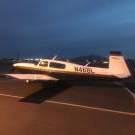

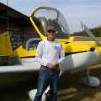
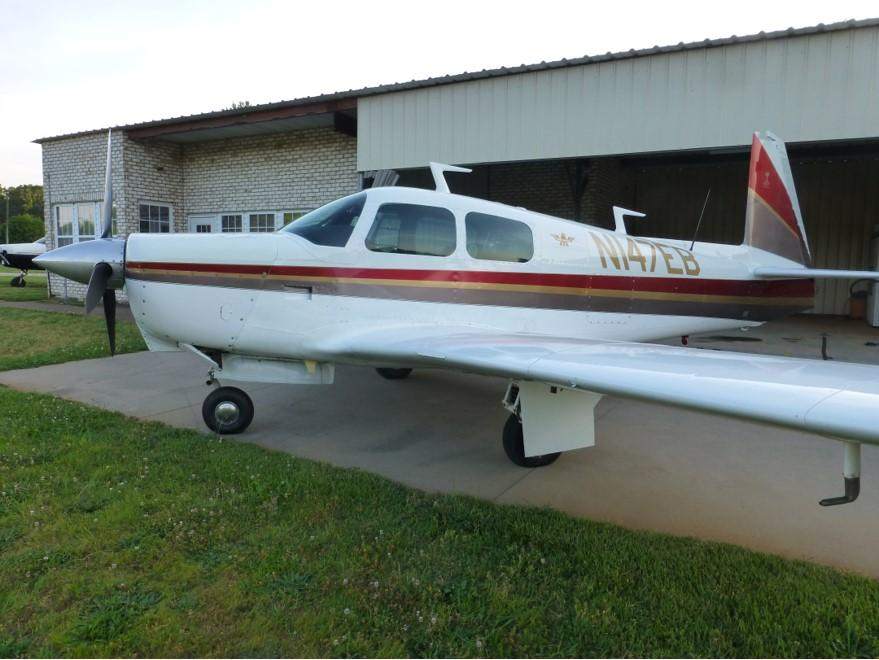
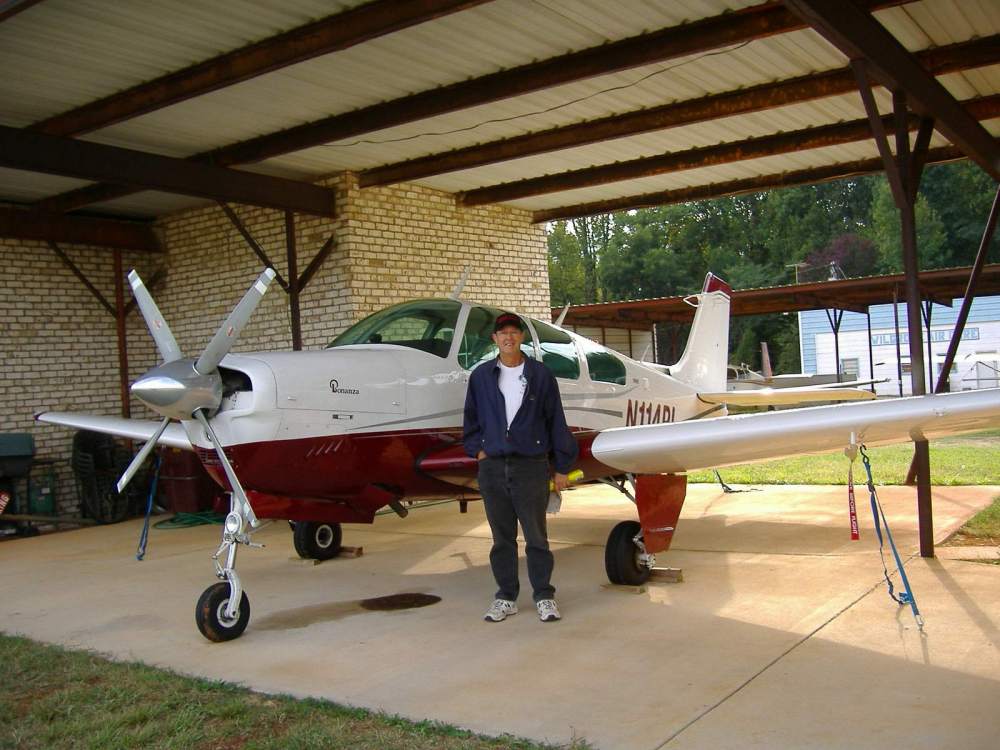
.thumb.jpg.dba3b67022de6147946b261114d2fc65.jpg)
